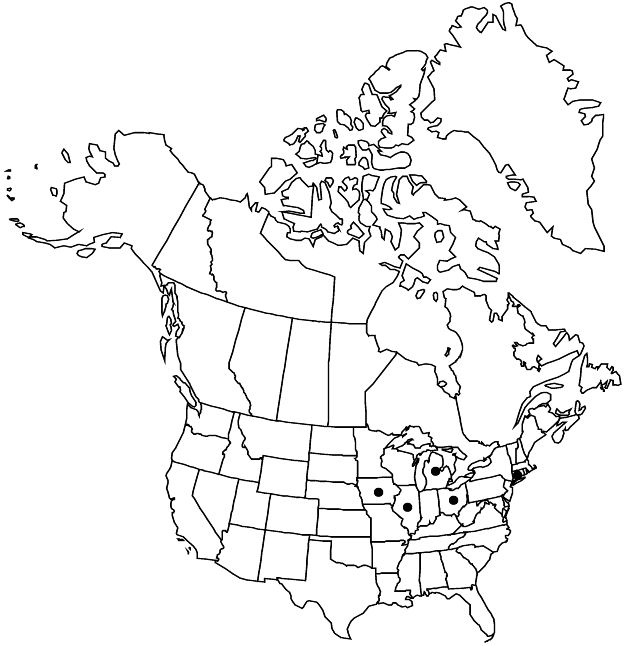Shrubs or small trees, 1–4 m, armed with thorns. Branchlets brown to purple-red, glabrate. Leaves deciduous, opposite to subopposite, sometimes fascicled on short shoots; petiole 5–15 mm; blade light green abaxially, glossy darker green adaxially, commonly yellowish or pale in age, oblong to elliptic, obovate-elliptic, or oblong-lanceolate, (4–)6–11(–13) cm, usually (2.5–)2.8–3.5(–3.8) times longer than wide, subcoriaceous, base cuneate, margins serrulate to crenate-serrate, apex acute, abaxial surface puberulent along veins or at least in vein axils, hairs wavy or curled, yellow, adaxial surface glabrous; secondary veins (4–)5–7(–8) pairs, all diverging at nearly same angle. Inflorescences fascicles. Pedicels 5–10 mm. Sepals 4. Petals 4. Drupes black, globose to subglobose, 5–7 mm; stones 2.
Phenology: Flowering Apr–Jun.
Habitat: Old fields, thickets, meadows, degraded woods, woods edges, commonly with Rhamnus cathartica and R. davurica.
Elevation: 200–300 m.
Distribution

Conn., Ill., Iowa, Mich., Ohio, Asia (China, Japan, Korea).
Discussion
According to E. G. Voss (1972–1996, vol. 2), some plants of Rhamnus utilis in Michigan are similar to forms of R. davurica and perhaps represent hybrids between the two. Hybridization between R. cathartica and R. utilis has been documented (N. L. Gil-Ad and A. A. Reznicek 1997).
Selected References
None.